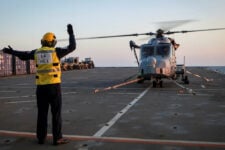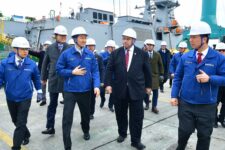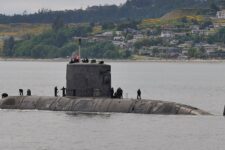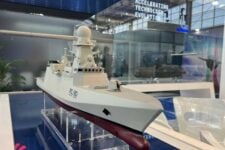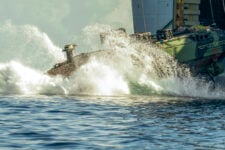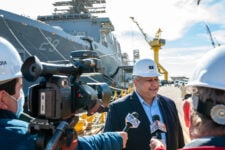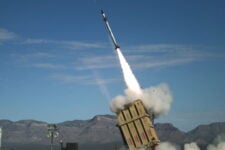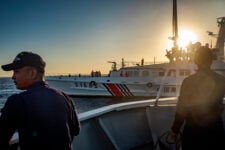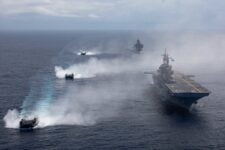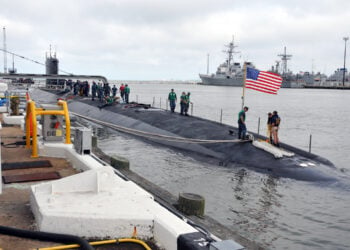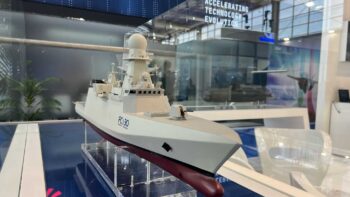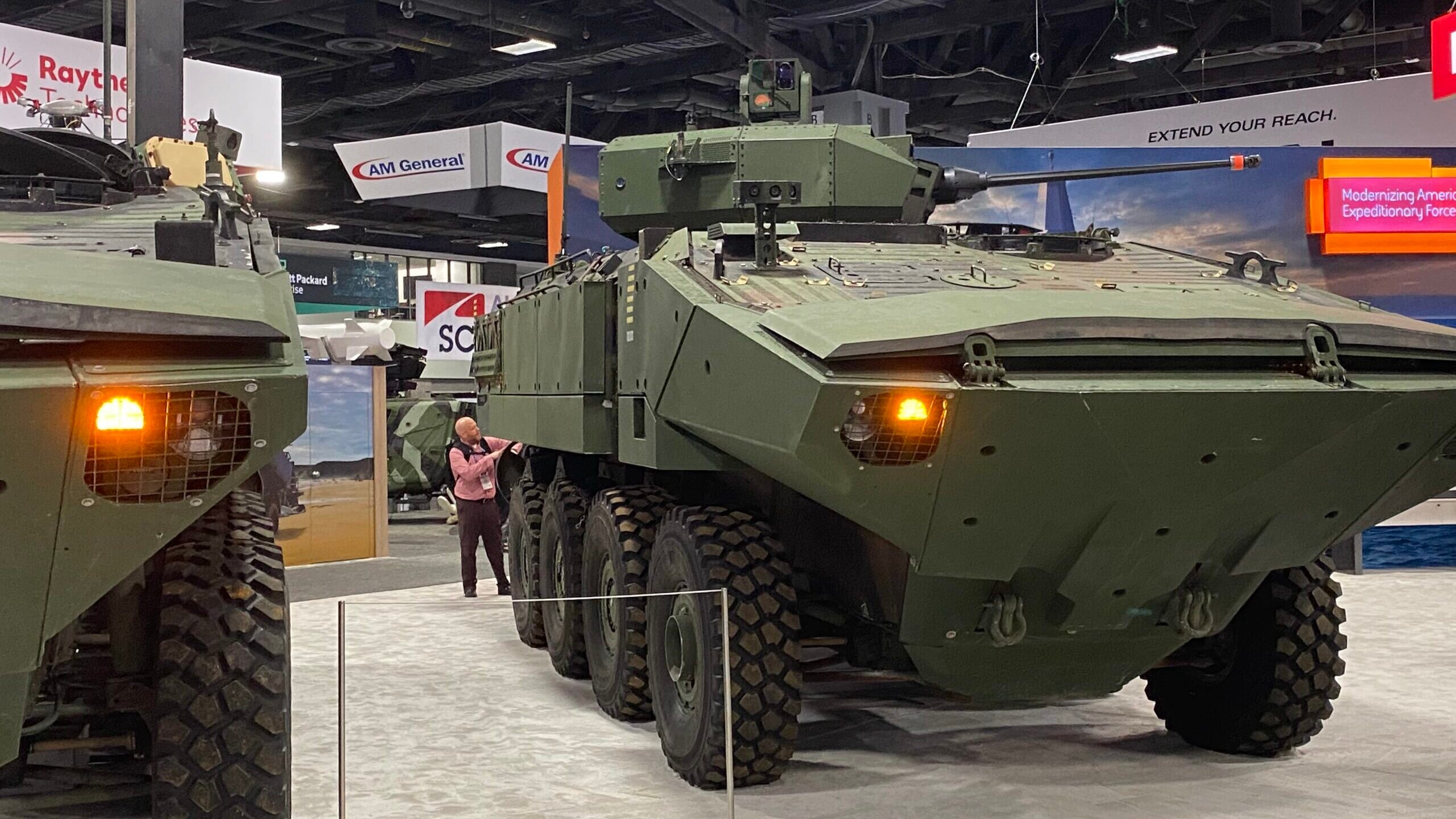
BAE Systems displays its 30mm cannon variant Amphibious Combat Vehicle at Modern Day Marine. (Justin Katz/Breaking Defense.)
MODERN DAY MARINE 2023 — The Marine Corps is actively discussing with industry the idea of developing a driver simulator for its Amphibious Combat Vehicle, with the goal of having 75 prototypes in Marines’ hands next year.
“Anybody that has read the news knows that we’ve had some challenges navigating the surf zone,” Col. Tim Hough, the program manager overseeing the ACV, told attendees here at the Modern Day Marine expedition on Tuesday. “When we went through the surf zone in a tracked vehicle, it performed a lot differently than what we do now in an ACV. So, we had to go back and really figure out a way that we can reduce the risk of Marines transiting the surf zone.”
FULL COVERAGE: Modern Day Marine 2023
Hough said the service selected two companies to move forward with the idea, after receiving 11 responses to a request for white papers in March.
“The overall goal with that is it’s expeditionary, so Marines can deploy out on a ship and get those reps and sets before they slash out of the back of the well deck,” he said.
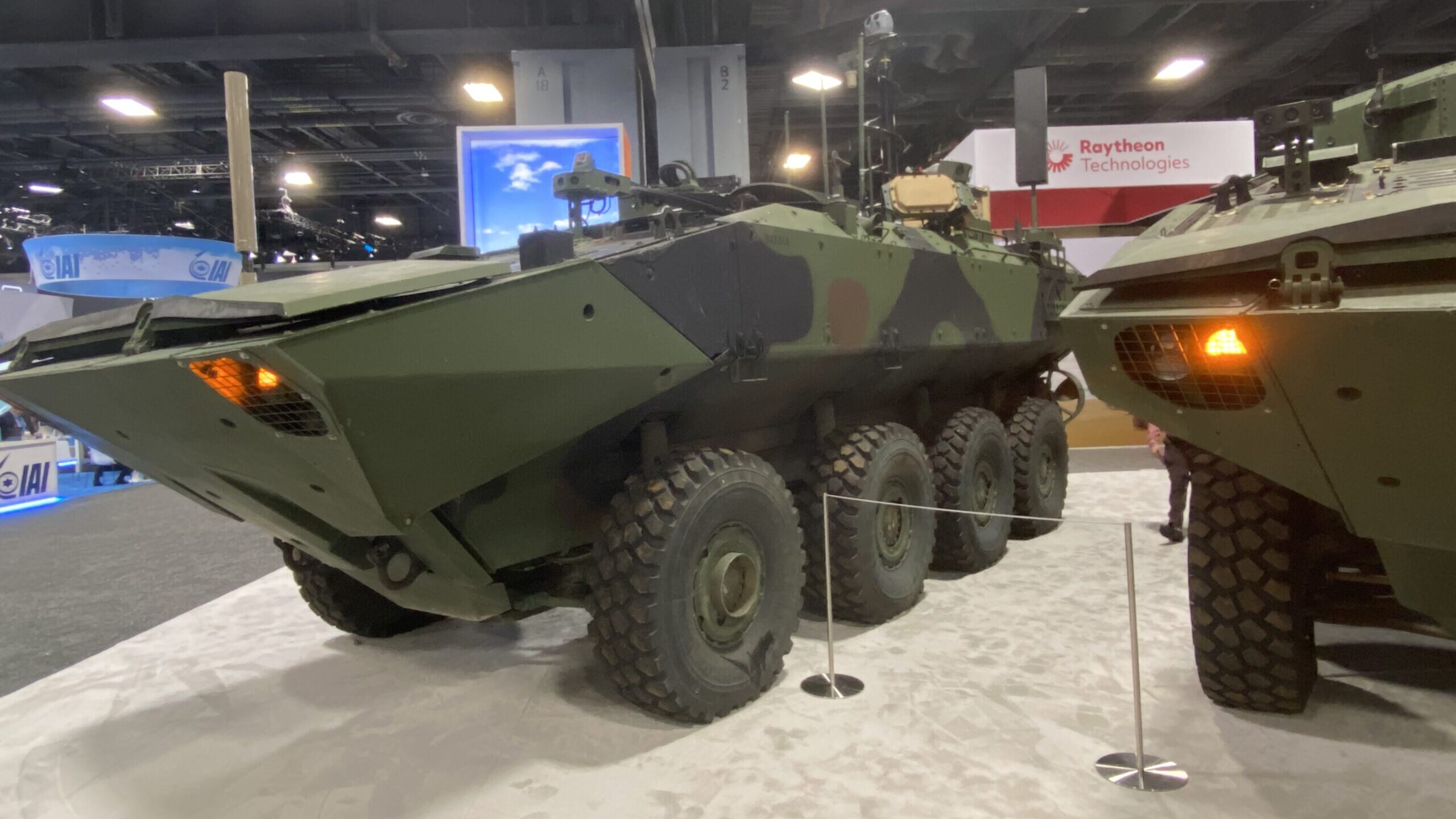
BAE Systems displays its C4 UAS variant Amphibious Combat Vehicle at Modern Day Marine. (Justin Katz/Breaking Defense.)
Multiple training accidents in recent years involving ACVs in the surf zone led the Marine Corps to sporadically halt training exercises and spurred Marine Corps leadership to take more seriously the methods Marines use for evaluating surf conditions.
Lt. Gen. Karsten Heckl, the Marines’ top requirements officer, in February briefly discussed technologies with which the service was experimenting to provide Marines with more objective measurements they can use while deciding whether its safe to transit the surf zone.
Hough on Tuesday said his office was working in concert with the Marine Corps Warfighting Lab on a technology that can “analyze waves on its own,” which then provides information to Marines evaluating whether to make a transit.
“Believe it or not, that is a challenging environment,” Hough said. “I think for a long time, we as an institution really took for granted how difficult the surf zone is.”
The Amphibious Combat Vehicle, produced by BAE Systems, is primarily built to transit Marines between ship and shore as well as perform a variety of missions on land, depending on which of the four variants is being used. Those four variants include: personnel, command and control, a 30mm cannon and recovery, each of which are in different stages of development and fielding.
Garrett Lacaillade, vice president of amphibious vehicles at BAE, told Breaking Defense on Tuesday the company has delivered 200 personnel variant vehicles to the Marine Corps out of its York, Pa., facilities. The command and control variant deliveries are expected to be completed in 2024. The remaining two variants are still in design and development phases, he added.

